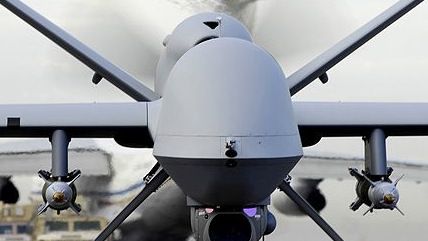New Study Finds That Drones Kill 10 Times More Civilians Than Manned Aircraft


A new study has found that the use of drones in Afghanistan resulted in 10 times more civilian deaths than manned aircraft. The study was conducted by Larry Lewis, a research scientist at the Center for Naval Analyses, and Sarah Holewinsk of the Center for Civilians in Conflict. The report used classified military data to calculate the number of civilian deaths caused by drones as opposed to manned fighter aircraft.
Lewis and Holewinsk examined the manned and unmanned strikes that occured in Afghanistan between mid 2010 and mid 2011, the most ferocious period of the air war, when up to 10 bombing missions a day were conducted. This was double the previous rate seen during Gen. Stanley McChrystal's time as Commader of U.S. and NATO Coalition Forces. Gen. McChrystal's strategy had been to limit air strikes to avoid civilian casualties and the subsequent outrage from the local population.
The report stands in stark contrast to President Obama's speech in May, where he claimed that "conventional airpower or missiles are far less precise than drones, and likely to cause more civilian casualties and local outrage." Lewis, who has conducted six previous studies into civilian casualties in Afghanistan noted that, "The fact that I had been looking at air operations in Afghanistan for a number of years led me to suspect that what I found was in fact the case." The findings may reinvigorate the debate between the effectiveness of pilots and the advantages of new technology.
From The Guardian:
"These findings show us that it's not about the technology, it's about how the technology is used," said Holewinski. "Drones aren't magically better at avoiding civilians than fighter jets. When pilots flying jets were given clear directives and training on civilian protection, they were able to lower civilian casualty rates." Yet the demand for additional drone strikes by commanders in the war zone creates pressure to reduce training, Holewinski and Lewis note."Adding or improving training on civilian casualty prevention is a resource decision in direct tension with the increasing demand for more UAS [unmanned aerial systems] and more operations, since additional training on civilian protection means time must be taken from somewhere else including the mission itself," Lewis and Holewinski write in their Prism article.
The studies findings provide more reasons why proponents of drones such as Director of the CIA John Brennan should be skeptical about their use.


Show Comments (34)